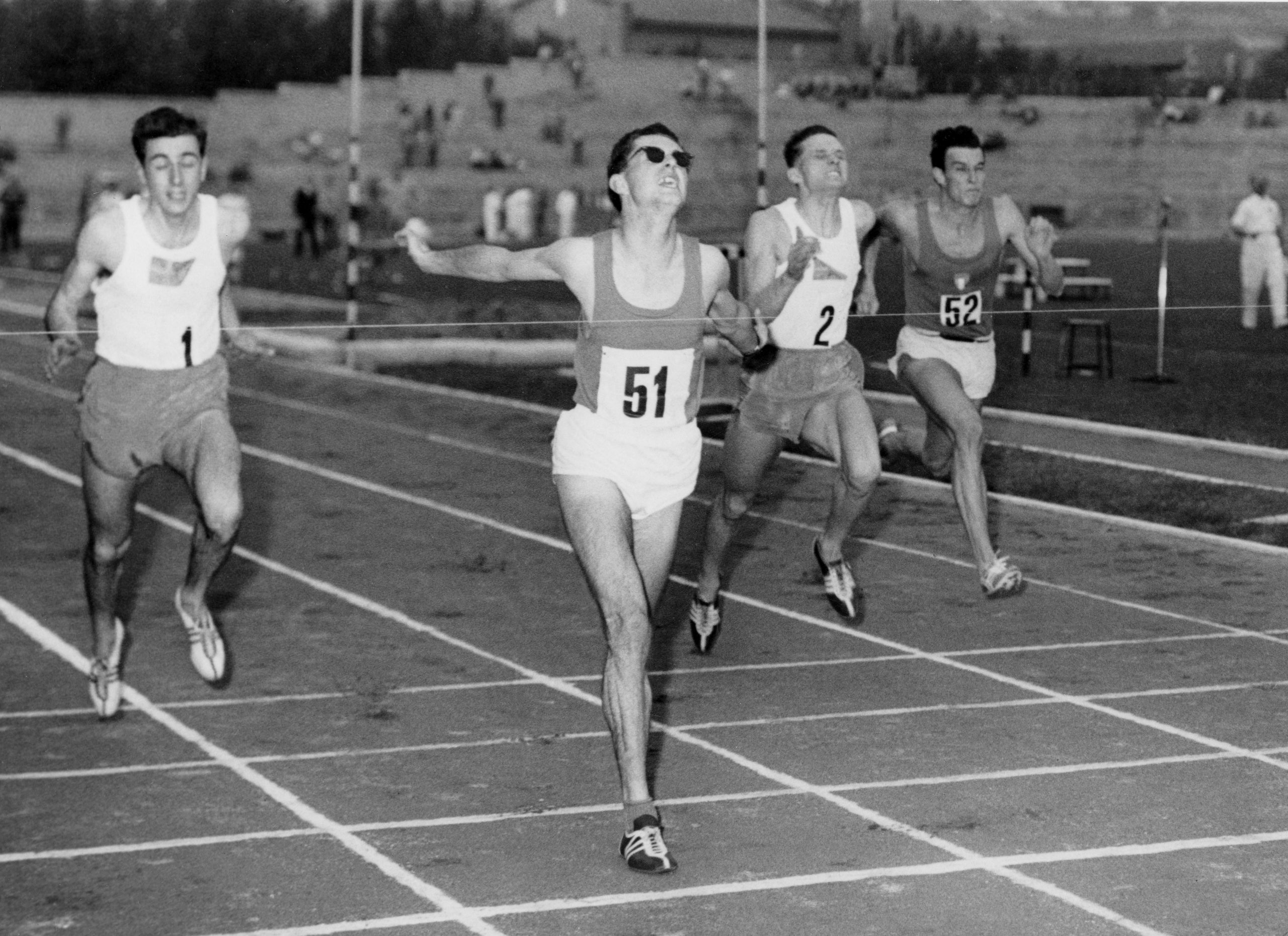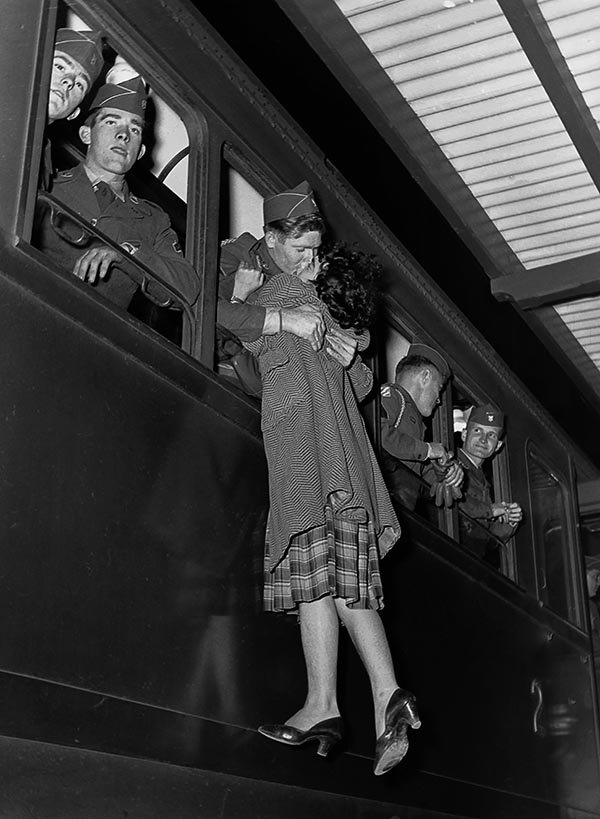by Alessandra Ressa
The young girl kissing an American soldier at Trieste station is probably one of his best known shots and one that made history. The year was 1954 and the city was still under Allied occupation nine years after the end of World War II in what was known as the Free Territory of Trieste.

As the line was drawn between Italy and Tito’s Yugoslavia, British and American soldiers began to head back home (James Morris among them, later to become world-acclaimed writer Jan Morris). That day of farewells, Ugo Borsatti, undoubtedly the most well-known and talented photographer in Trieste, was there to capture the moment.
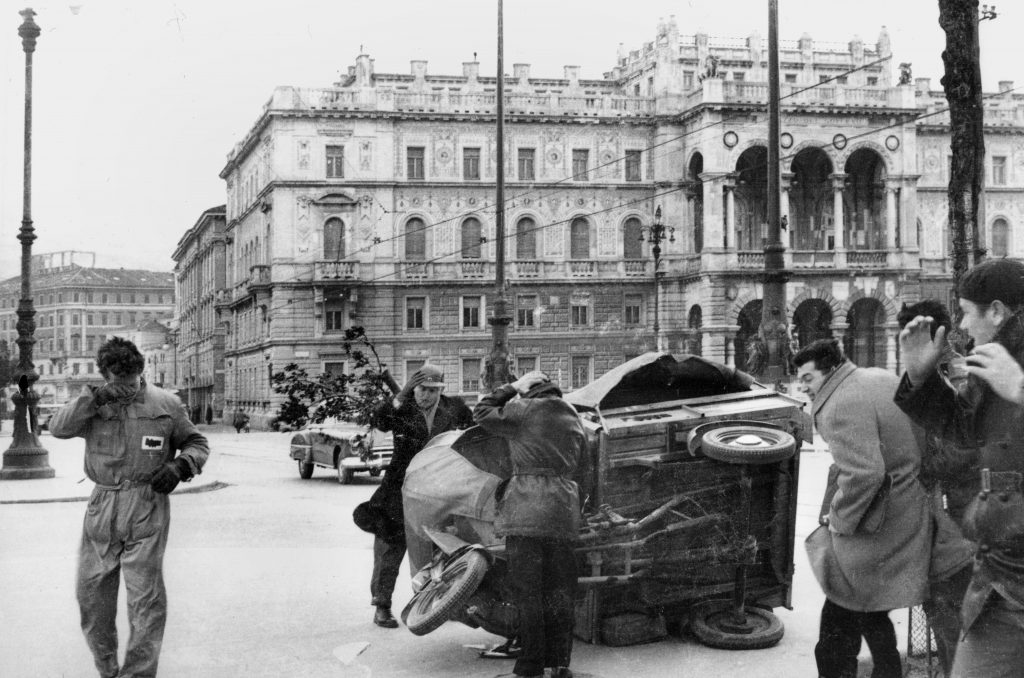
“I knew it was a day of departures at Trieste station – Ugo Borsatti, almost 95 today, remembers with great fondness – and I decided to take some photos of the American soldiers leaving the city. Everywhere you looked there were girls crying.Tears, hugging and kissing… it was heartbreaking. Next to me stood this little 19 year-old Triestina with a head full of thick curls… She cried desperately. She was saying goodbye to her American sweetheart in uniform on the train heading off to Livorno. All of a sudden, two of his comrades lifted her up so that he could hold her in his arms and kiss her goodbye one last time. Every time I look at this picture I still feel a pang in my heart.”
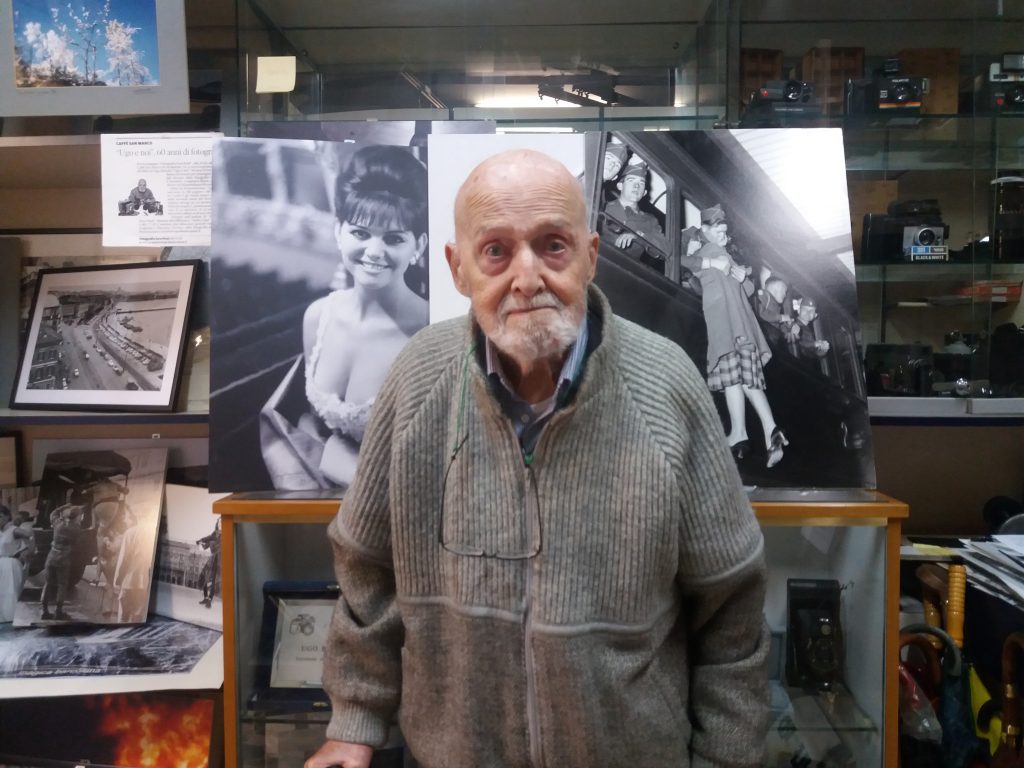
As the photographer was later to discover, the couple he immortalized at the station in 1954 managed to marry and later move to California. Many years later, in 1998, he had the chance to meet them again during their short visit to Trieste.
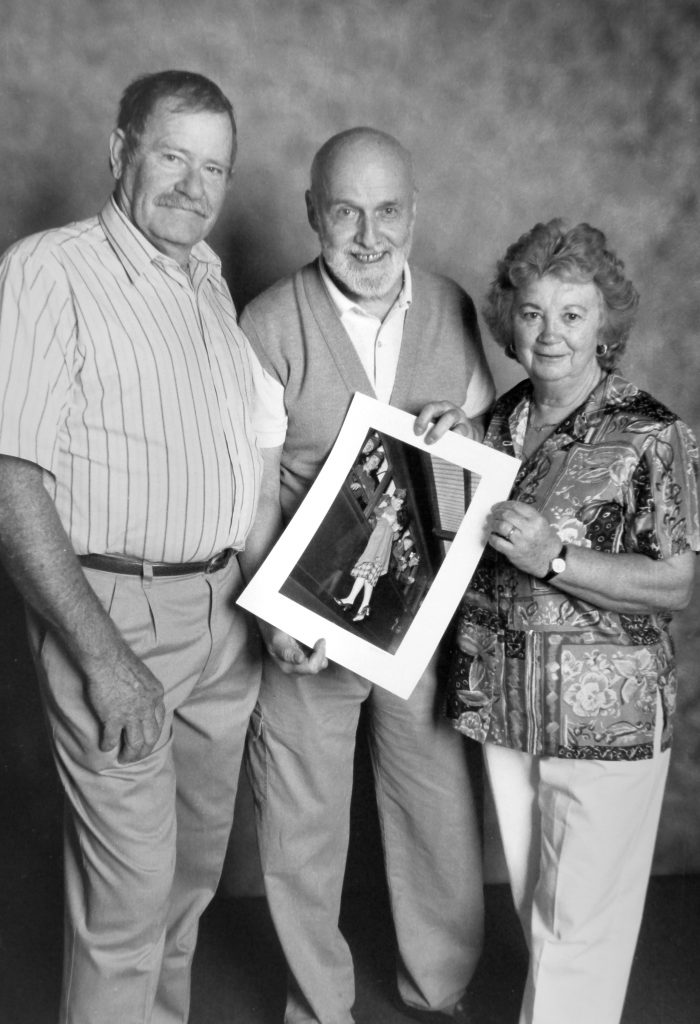
Listening to Ugo Borsatti talking about his Trieste isn’t simply a wonderful narrative experience. With great passion and humbleness he will literally take you there, through almost a century of troubles and rebirth. The hopes and fears, the sounds and smells of whole generations have been captured forever by the intuitive and careful eye of his camera. The arts, war, occupation, deportation, the Cold War, the Sixties, the Seventies, all the way to the second millennium.
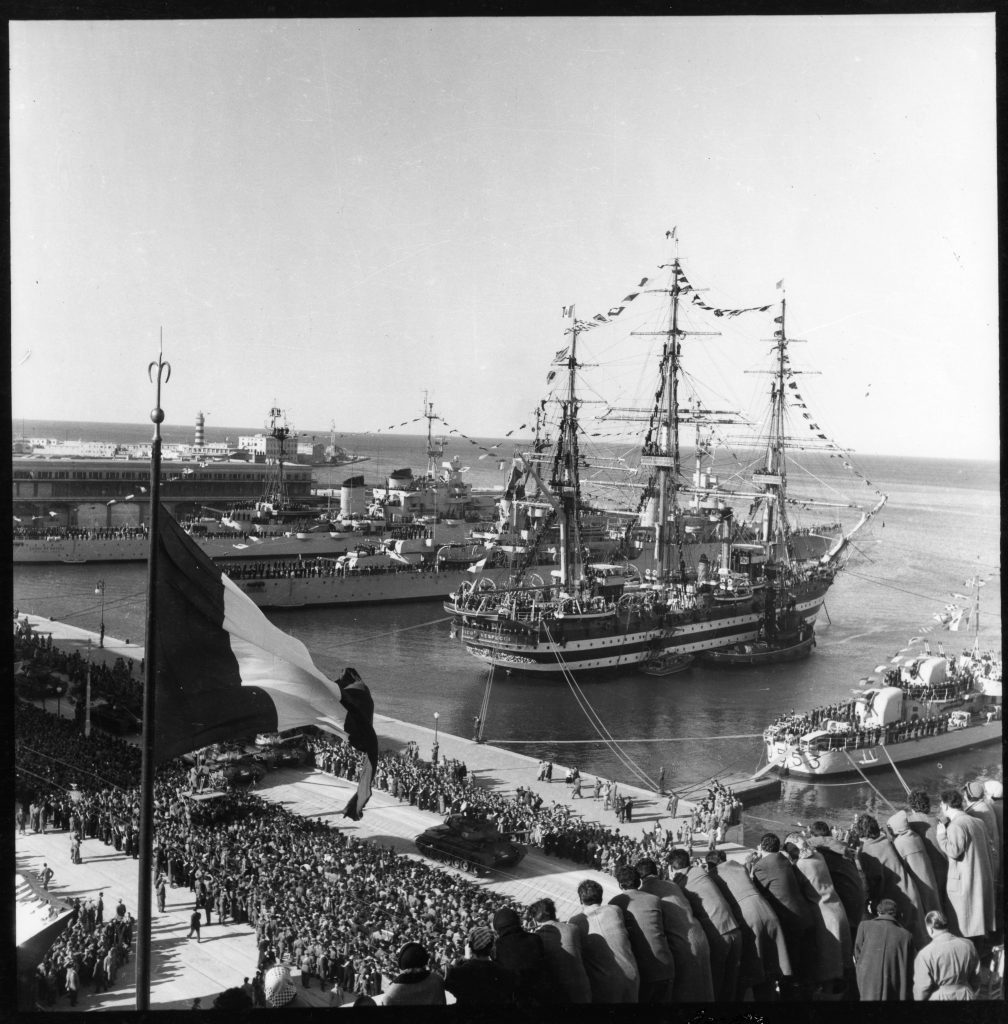
What is your relationship with Trieste?
“I love Trieste with all my heart. Even the times I planned to leave it, I always knew I would be back, and in the end I never left. The things I love most about Trieste is the Bora wind. I could not resist a stroll along Molo Audace when the Bora blew, I think it’s probably the most beautiful thing to do in Trieste. I particularly love Trieste in winter, with its crispy air and cold wind.”
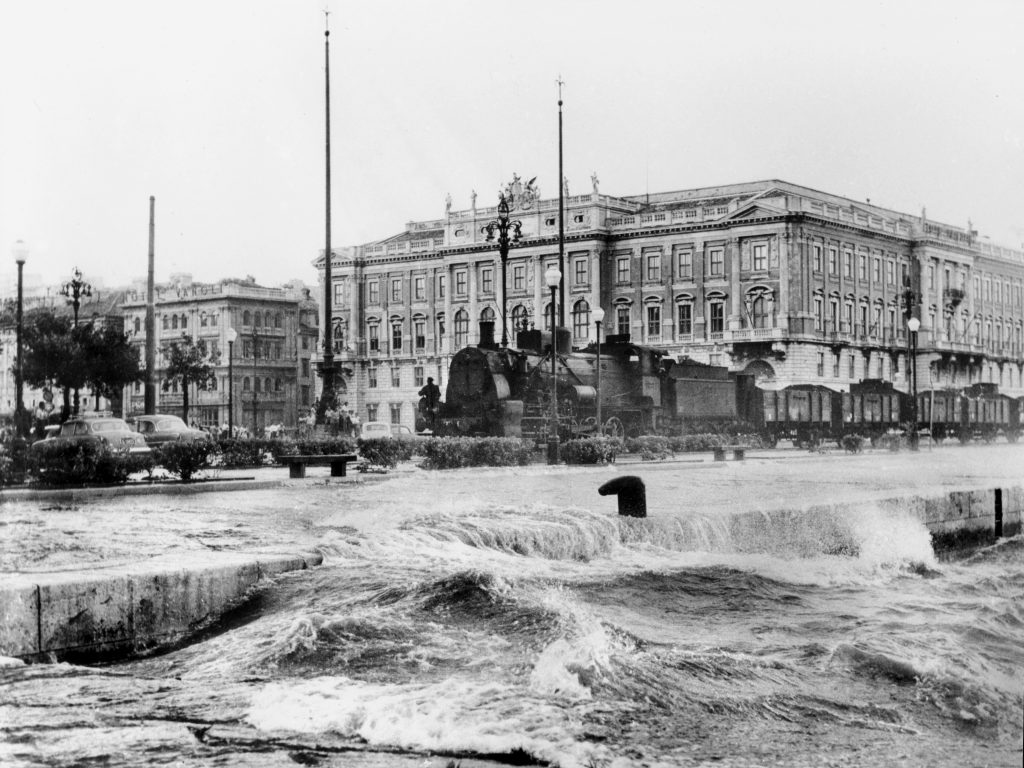
While in high school, Ugo and his classmates were forced by Germans to dig trenches near Fiume (today’s Rijeka, in Croatia). He managed to escape only to be captured by Yugoslavian partisans and was interned in a camp.
“It was a concentration camp without barbed wire – Borsatti remembers – because security was so high that no one dared to escape. I was sentenced to death. Incredibly, I managed to escape twice and was later captured by the Germans. I was only 17. All the other prisoners who had remained the in that Yugoslavian camp were killed. I still think of those comrades with great sorrow”.
Of those traumatic years Borsatti kept a secret diary, later published by Lint with the title “Croazia 1944. Diario di un diciassettenne”.
What is the photograph in your portfolio that best represents Trieste?
“I think I was able to capture with great intensity the moments of turmoil immediately before the annexation of Trieste to Italy. The year was 1953 and the streets of Trieste, which had been under Allied occupation since the end of WWII in 1945, started to get filled with protesters. People wanted the city to be returned to Italy and in two specific occasions the special police, appointed by the temporary Allied government, shot protesters near Sant Antonio church in Ponterosso. Among them was young Pietro Addobbati. I remember him running seconds before he was killed. He was only 14. Six people died and hundreds were wounded.”
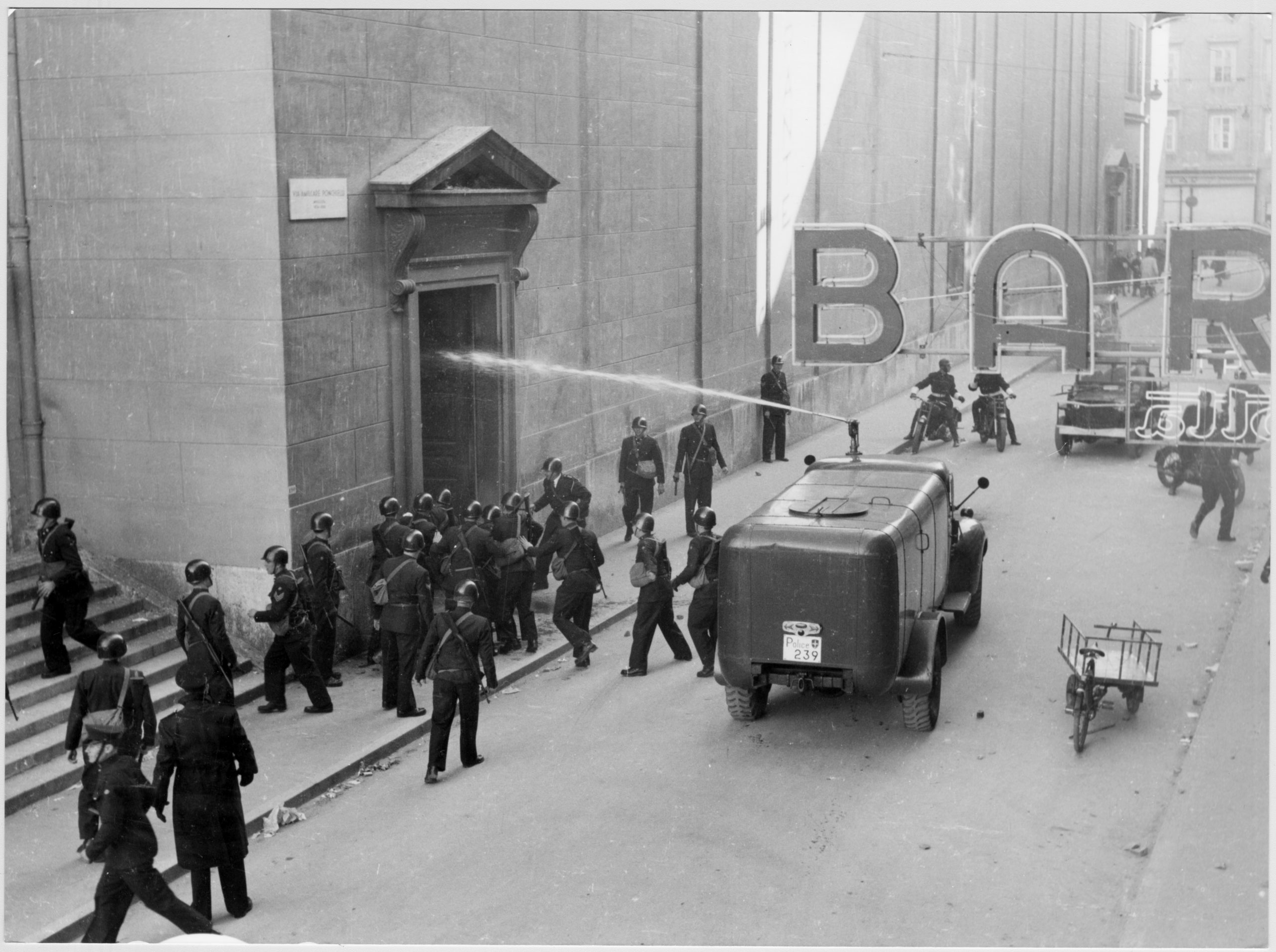
In 1954 Trieste’s destiny was decided at last. The line between Italy and Yugoslavia was drawn and Most of Tito’s requests over the then vast Italian territory in today’s Slovenia and Croatia were met. Trieste and a tiny strip of land along the gulf enclosing Muggia were spared and were given back to Italy with great rejoicing of the population, as shown in another of Borsatti’s iconic shots.
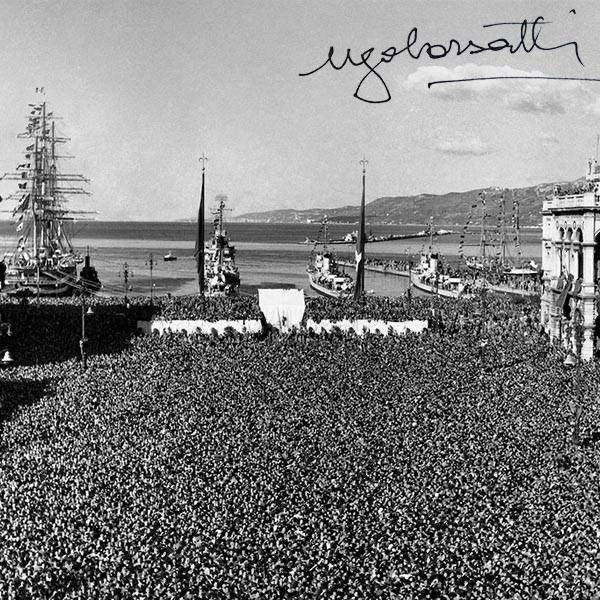
Since then, Ugo Borsatti has been the most well known and appreciated photographer in Trieste. He has covered sports, culture and daily life for major Italian publications and even managed to have one of his pictures exposed at MoMA in New York (The photo is known as “Death of a carter”). The talented photographer admits to not having been able to adjust to the evolution of photography, preferring the “old”, traditional techniques.
“My photographs have never been staged – he explains – they capture with spontaneity particular moments of life in Trieste. In the past, there was a lot of work behind every single shot. At least two hours. Not only you had to be in the right place at the right time, but when you clicked, that was your final outcome, there was no chance to modify it. You had to develop your own pictures. The sweet clicking noise of my Leica was and still is music to my ears. Today, thanks to technology, everybody can be a photographer using cheap cameras and digital programs. But it’s not the same.”
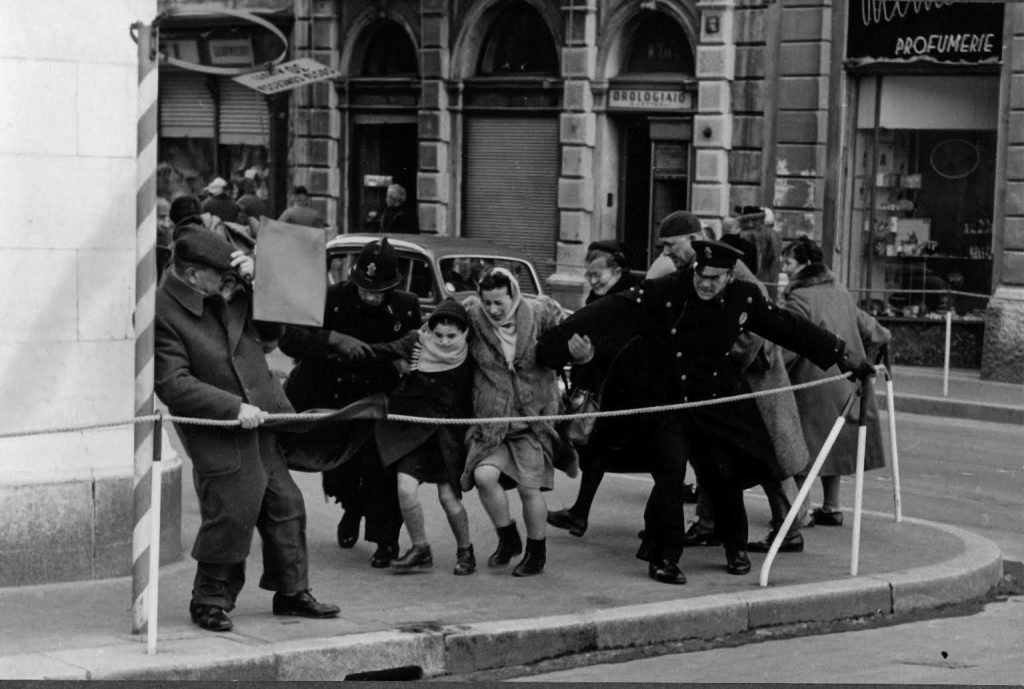
Famous people and unknown Triestini today belong to the precious collection of over 350,000 negative films. The Department of Cultural heritage of the Italian government has declared Borsatti’s archives protected for their historical value. Many of his photographs contained in the archives are available at the Civici Musei di Storia ed Arte di Trieste.
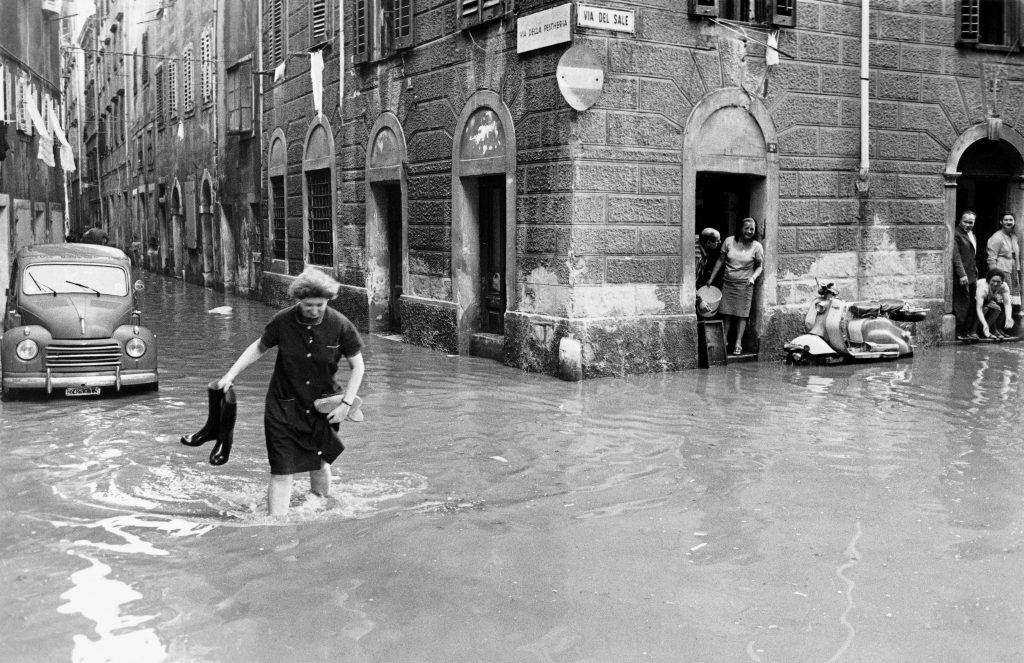
In 1952 Borsatti opened his photography shop and atelier Foto Omnia. Since then, he has never stopped working in his shop, now in via Gatteri 17/b. Lately, at nearly 95, he has had to reduce his working hours, but you can still meet him in person at Foto Omnia every Saturday from 10 to 12 (you can make sure he’s there by dropping a line ugo.borsatti@gmail.com).

In his shop, you can look at many of his iconic pictures that he sells autographed at very affordable prices. Although he has had to part with most of his precious collection cameras, including his beloved Leicas, in his shop you will find a vast assortment of objects, photography accessories, pictures, oldies and copies of his publications.

As Christmas is quickly approaching, Borsatti’s books and photographs would make great, invaluable presents. But, most of all, it would be a chance for you to meet one of Trieste’s last celebrities.
